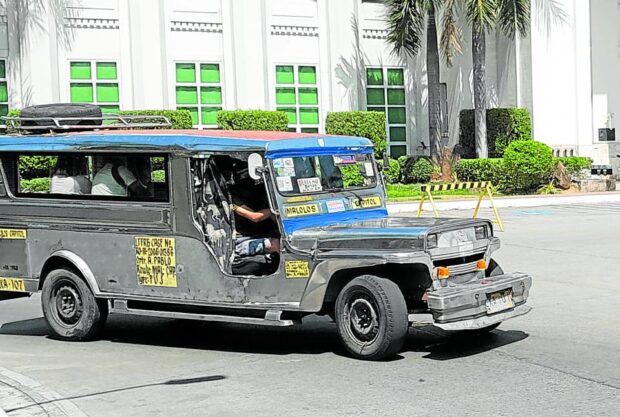Malolos turns ‘karatig’ jeepneys into tourist transport

FREE RIDE | The Malolos city government is preserving this traditional jeepney, born in the 1950s and called “karatig,” by using the iconic vehicle to provide free transport to tourists. (Photo by CARMELA REYES-ESTROPE / Inquirer Central Luzon)
CITY OF MALOLOS, Bulacan, Philippines — Amid the government’s transport modernization program that will phase out traditional public utility jeeps (PUJs), this city intends to showcase these iconic jeepneys to promote its tourist destinations and its rich history.
Tourists who will visit here will have an easier time navigating the narrow streets to historic spots now that the city government has tapped the local jeepneys, called “karatig” here, to ferry them for free.
A visit to Barasoain Church, Museum of the Women of Malolos and the old houses-turned-national government offices during the First Philippine Republic period more than a century ago, will now be made by riding the Karatig jeepneys for free as part of the city government’s effort to preserve the iconic jeepneys that will be sidelined by the modernization program.
Malolos City Mayor Christian Natividad told the Inquirer in an interview on Sunday that he will tap the more than 400 karatig jeepneys in the city for the free ride project.
The goal, he said, is to make the group Malolos Karatig Drivers and Operators Association (Makata) a partner of the city government in promoting local tourism and to help boost the historical, cultural and heritage value of the Karatig jeep as Malolos’ own.
Article continues after this advertisementIt is also meant to help protect and preserve them as the city’s major public transport despite the phaseout of the old jeepneys under the 2017 national government’s Public Utility Vehicle Modernization Program.
Article continues after this advertisementThe Karatig jeepneys have been traversing the Paseo del Congreso where Barasoain Church and other historical places like Casa Real are located.
Heritage value
Natividad said the karatig jeep should remain operating for the public because it is the only type of PUJ that could fit in the narrow and small roads of Paseo del Congreso.
The karatig (roughly translated means adjacent or nearby places) jeep is a shorter version of the Sarao PUJ, which later became known as “Hari ng Kalsada” (king of the road) and one of Manila’s cultural symbols.
A karatig jeep can seat up to 16 passengers while a regular Sarao PUJ can accommodate up to 20 passengers.
Karatig also has its own distinct features, resembling closer to the metallic US military jeep left behind by American soldiers.
Local historian Isagani Giron, 71, told the Inquirer in an interview on April 13 that American soldiers left these jeeps to local guerrillas in Malolos in the 1950s, or after World War II ended. The local guerrillas then converted and innovated them as commuter karatig jeeps in the 1950s to generate income for their families.
Since then, the karatig jeepneys plied the Malolos-Bayan-Kapitolyo route as the only PUJ that is allowed to traverse along the historical Paseo del Congreso road. Over the years, the Karatig jeepneys have expanded their routes to other significant areas in the city.
The city government has yet to announce the exact date when the karatig jeeps will be available to ferry tourists for free but Natividad said talks between the city government and Makata have already started.
No to transport strike
Makata did not join last month’s nationwide transport strike to protest the modernization program, but the group remained firm that they would want the iconic jeepneys to stay for good in all its regular routes in the city.
“The roads in Malolos are narrow and small. We traverse less than a 4-kilometer route and we cannot afford to pay the modernized unit at P2.8 million each because of the [P12] minimum fare we implement,” said Sherwin Decena, 46, head of the 400-Makata group in an interview on April 13.
He said phasing out the units in favor of long modern jeeps will not only send them jobless but would also worsen the traffic congestion along the streets in the capital city.